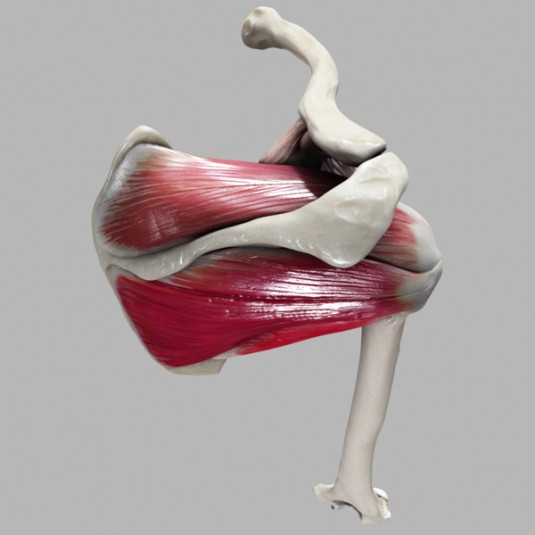Moving beyond metals and plastics, there is huge growth potential for custom manufactured bio-materials.
By Kathleen Maher
 There is a great deal of excitement around the growth of additive manufacturing. The US government supports seeing it as an opportunity for manufacturing to come home to the US on its own terms. Meanwhile incredible work has been happening on the medical side of the additive manufacturing front and the course of democratization is happening even faster. Tools created through alliances between 3D Systems, EOS, Stratasys, Geomagic, Bespoke, and 3Shape have enabled resulted in custom dental appliances for straightening teeth a la Invisalign, instant crowns at the dentist’s office, and custom fitted prosthetics. People are coming in contact with the products of additive manufacturing and they don’t even realize it. Now, some of the new work being undertaken by Autodesk and partner Organovo is getting really personal.
There is a great deal of excitement around the growth of additive manufacturing. The US government supports seeing it as an opportunity for manufacturing to come home to the US on its own terms. Meanwhile incredible work has been happening on the medical side of the additive manufacturing front and the course of democratization is happening even faster. Tools created through alliances between 3D Systems, EOS, Stratasys, Geomagic, Bespoke, and 3Shape have enabled resulted in custom dental appliances for straightening teeth a la Invisalign, instant crowns at the dentist’s office, and custom fitted prosthetics. People are coming in contact with the products of additive manufacturing and they don’t even realize it. Now, some of the new work being undertaken by Autodesk and partner Organovo is getting really personal.

Organovo is an innovator in the field of medicine. It is building bio-printers, which deposit cells for growing functional human tissues that can be implanted in patients with less worry about rejection. The tissues are developed using the patients’ own cells. Organovo’s scientists working in the early, very experimental phases, have been working from the command line relying on unique scripts for specific jobs. This, obviously, is not a good use of people’s time. Organovo’s CEO Keith Murphy, told Wired magazine, “We already work at the intersection of enough disciplines that developing software was not something we thought was a good idea.”
Instead Organovo is teaming up with Autodesk to create CAD tools that will let Organovo’s scientists design specific organic structures such as blood vessels, liver tissue and other parts for implantation. In an article published by Science News Professor Brian Derby of the University of Manchester, England describes the bio-printing model as used by companies like Organovo in this field. 3D printing technologies are used to build 3D scaffolds. Cells can be placed in the structures as it is being built by the printer or they made by added and encouraged to grow along the structures. 3D printing technology gives scientists the ability to build structures that mimic structures found in the human body.
Organovo went public in 2012 through a small-cap offering and is currently valued at $98 million. The current work is based on research out of the University of Missouri to create bio-ink from cells that could be deposited in a layer-by-layer matrix similar to what 3D printers do today with plastics and metals.
The Autodesk angle
Autodesk is an enthusiastic supporter of the 3D printing revolution. The company has been supporting it with content as well and free consumer tools. Now the company is making a graceful pivot to medicine. It’s not the Autodesk’s first entry into biological fields. Early in 1990, Autodesk founder and then-CEO John Walker was distracted by the potential of Hyperchem, a molecular modelling tool developed by Hypercube. Autodesk licensed the technology and even introduced Hyperchem to its dealer network. The company eventually stepped away, recognizing the field as an area the company was not yet ready to enter and Hypercube resumed developing Hyperchem on its own. Today it is being used in pharmacology and in university research.
Autodesk’s interest in medical applications has continued. Maya has been used for medical visualizations. Inventor has been used to in the development of medical equipment. It’s used to develop prototypes. In addition, Autodesk’s exploration in analysis software has applications in biological fields. Autodesk Research has active programs in nanotechnology and in fact Carlos Olguin leads Autodesk’s Bio/Nano Programmable Matter group, and he is part of the team working with Organovo. Olguin told Wired, “[synthetic] biology is becoming an engineering discipline.”

Currently, the companies are at the earliest stages of this technology. The work they’re doing now is to create very simple structures and to find approaches that don’t damage delicate cell tissue, but the promise is obvious.
Our take
It was one year ago when idly walking the aisles of CES I came across a company that was selling 3D printers for use in the food industry, to pump out cute florets for birthday cakes, crazy sushi bites, or maybe some new miracle by Spanish chef Ferran Adrài, who has left his restaurant El Bulli in the Spanish highlands to explore new techniques in food science. I started to get an inkling of how much further additive manufacture technologies can really go.
Organovo is working in the specific field of human tissue design, but the founders have also established Modern Meadow as a company to research other opportunities for organic materials in additive manufacture including food or maybe leather. The company is well on its way; Modern Meadow founder Gabor Forgacs grilled and ate a piece of synthetic meat at TedMed 2011. Personally, I’m thinking fur without guilt would be nice. In the end you know, it’s all just meat, and before that, it’s cells.





